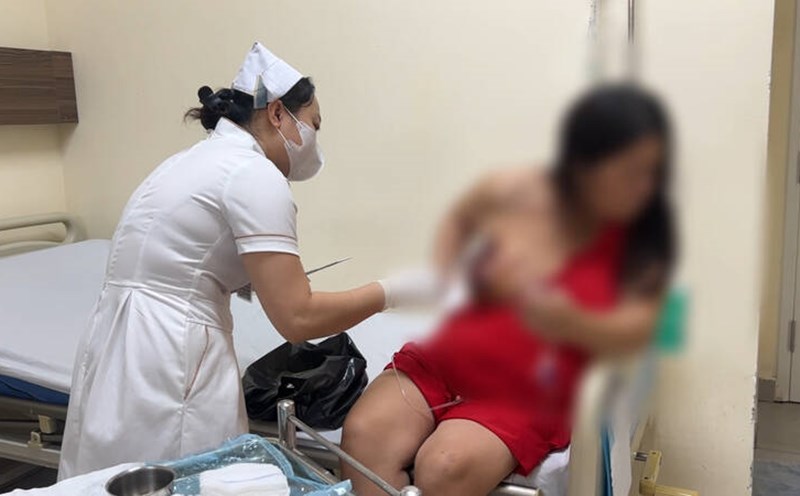Every year, about 8,600 to 9,000 new cases of retinopathy are recorded globally, worryingly, 90% of which occur in developing countries. This is a disease that not only threatens eyesight but also poses a risk of death if not detected and treated promptly.
The case of patient Nguyen Nam Kha (2 years old, Ho Chi Minh City) who unfortunately had retina cancer. According to the family, since about 5 months, the baby has continuously had red eyes and painful swelling. With months of age who can see around better than 1-3 months old, the baby is not agile in grasping surrounding objects, not focusing on objects or on relatives like parents. The peak was after that when the young master's hand was white, so the family took the child for examination. Through clinical tests, the child was determined to have retina cancer. The patient is currently receiving intensive treatment.
Dr. CKI Le Phuoc Hiep, Department of Pediatric Oncology, Ho Chi Minh City Oncology Hospital, said that retinopathy usually affects children under 3 years old. Warning signs include: white colitis when the colitis is white instead of black, often described as "cat's eyes" when taking flash photos or in a dark environment; blurred vision of the baby's eyes that does not look straight but is distorted in or outward; loss of vision difficult to detect in young children, but can be observed through poor grasping, difficulty in recognizing objects or data; and other symptoms such as red eyes, swelling, lumps or small blisters.
Early diagnosis plays a key role in increasing the chance of successful treatment. retina cancer is often detected late due to unclear symptoms in the early stages. Eye bottom scanning, eye ultrasound, and cranial MRI scans are necessary diagnostic methods to accurately determine the condition.
The disease can stem from a genetic change, especially a change in chrysome No. 13 (gen RB1), with the possibility of genetics in some cases. retina cancer is classified according to the extent of the tumor's spread, from early stages (small tumors, limited to the retina) to late stages (large tumors, destruction of eye structure, or metastasis).
The top priority treatment principle is always to preserve the child's life, then to preserve the eyes and maintain maximum vision for the child. Modern treatments include: laser and freeze therapy (usually applied to the early stages); chemotherapy (used to miniature the tumor before surgery or as a whole-body treatment); eye drops (when the tumor is too large, destroys eye structure and cannot be preserved); and radiotherapy (ored when there is a lot of invasion of the optic nerve or metastasis, but needs to be carefully considered due to the risk of affecting the brain development of young children).
In terms of prognosis, the treatment rate is very high, up to more than 90% if the tumor is still limited to the eyeball. Conversely, if the tumor has spread or metastasized, the prognosis will be poor.
Doctors recommend that parents should raise awareness of unusual signs in children's eyes and take their children to the doctor immediately for timely diagnosis and treatment, protecting their future and eyesight.











